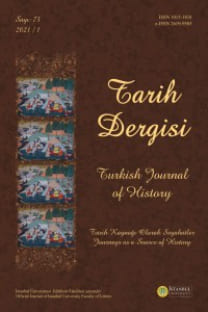Revan Livası yerleşim ve nüfus yapısı (1724-1730)
Günümüz Ermenistan Devleti'ne ait toprakların büyük kısmı Osmanlı İmparatorluğu'nun 1727 yılı idarî yapılanmasında Revan Livası sınırları içerisinde bulunuyordu. Osmanlı Devleti, Revan Kalesi ve çevresini 1724 yılı Eylül'ünde fethetti. Fetihten kısa bir süre sonra başlayan tahrir işlemi sonucunda hazırlanan 1727 tarihli Revan Livası Tahrir Defteri bölgenin sosyo-ekonomik yapısı hakkında önemli bilgiler vermektedir. Defterdeki kayıtlar bölgede büyük bir göç hareketinin yaşandığını, bunun bir sonucu olarak da livanın nüfusunun yaklaşık yarısını kaybettiğini göstermektedir. Gerçekleşen bu göç hareketinden esas etkilenenler Müslümanlar olmuş, Hıristiyan nüfus ise göçten çok daha az etkilenmiştir. Savaş dolayısıyla yerlerini terk eden Müslümanların göç yönünü daha çok mezhebî inançları belirlemiştir. Sünnî Müslümanlar başta Kars ve Bayezid olmak üzere Osmanlı topraklarına, Şiî Müslümanlar ise İran içlerine doğru göç etmişlerdir. Çoğunluğu Türk olan bu Müslümanların büyük kısmının göçebe hayat tarzı, kolayca göç etmelerinde etkili olmuştur. Bu durum, göçlerden daha az etkilenen bölge gayrimüslimlerinin, 1727 yılı Revan Tahrir Defteri'ndeki mevcut nüfus içerisinde oranını ciddi ölçüde artırmıştı. Bununla birlikte livadaki Müslümanlar %62'lik nüfus orana sahiptir. Gayrimüslim nüfus içerisinde göze çarpan önemli bir husus ise gayrimüslim Türklerdir. Bu Türkler gayrimüslim nüfusun %30'undan fazlasını oluşturmuşlardır. Bu makalenin başlıca amacı, ciddi anlamda Türkmen aşiretlerin yurdu olan Revan livasının 1724-1730 yılları arasında yerleşim ve demografik yapısını ortaya koymaktır.
Settlement and demographic structure of Revan Liva (1724-1730)
in 1727 most of lands of modern Armenian State were within the borders of Revan Liva Ottoman administrative structure. Ottoman State had conquered Revan and its surroundings in September 1724. Revan Livası Tahrir Defteri (Cadastral Survey) which was prepared after the registration in 1727, provides important information about socio-economic structure of the region. Records in Defter reveal large migration movements from the region which resulted in the loss of half of settlements' population. People who got severely affected were Muslims whereas Christians were not affected as much. The routes used by the Muslims, who migrated to the war, were generally determined by their religious sects. Sunni Muslims mainly migrated to Ottoman lands; Kars and Bayezid at most. Shiah Muslims however, migrated to inner lands of Iran. Most of these Muslims were consisted of Turks, hence their migratory life style led to a tendency towards migration. This situation increased the proportion of non-muslims in the total population in 1727 Revan Tahrir Defteri since they were less affected by the migration. Still, Muslims had 62 percent of total population. What is outstanding is that the proportion of non-muslim Turks in the remaining 38 percent. They consisted more than 30 percent of non-muslims. Main purpose of this paper is to put forward the demographic structure and settling of the lands which belonged to Turkic tribes to a serious extend in the period our research.
___
- ISSN: 1015-1818
- Yayın Aralığı: Yılda 3 Sayı
- Başlangıç: 1949
- Yayıncı: İstanbul Üniversitesi Yayınevi
